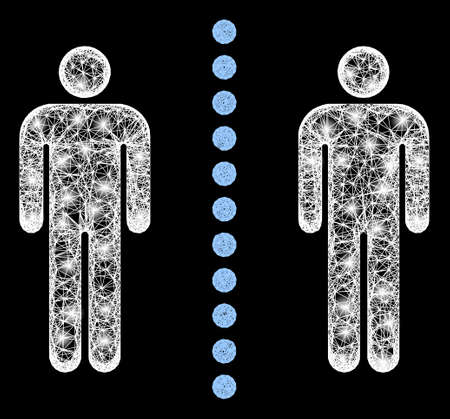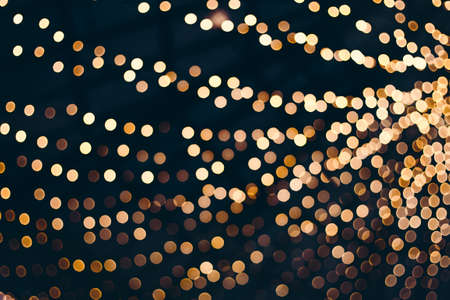1. Historical American Views on Eclipses
Throughout early American history, eclipses have sparked curiosity, fear, and wonder. Both colonial settlers and indigenous peoples had their own interpretations of these rare celestial events, creating a rich tapestry of stories and beliefs that continue to influence American culture today.
Colonial Accounts: Awe and Anxiety
For many early European settlers in America, eclipses were mysterious and sometimes frightening. Without modern scientific explanations, colonists often turned to religion or superstition to make sense of the sudden darkening of the sky. Ministers might preach that an eclipse was a sign from God—a warning or a call for repentance. Diaries and newspapers from the time describe people gathering outside, watching with a mix of awe and nervousness as daylight faded unexpectedly.
Common Colonial Reactions to Eclipses
| Reaction | Description |
|---|---|
| Religious Interpretation | Eclipses seen as messages or warnings from God; calls for prayer and reflection |
| Scientific Curiosity | Early astronomers and thinkers tried to predict and explain eclipses using basic tools |
| Superstitious Fears | Some believed eclipses could bring bad luck or disasters, like crop failure or illness |
Indigenous Perspectives: Stories in the Sky
Long before European settlers arrived, Native American tribes had their own unique explanations and traditions related to eclipses. For many tribes, an eclipse was more than just a physical event—it was a powerful story unfolding in the sky. Some believed that an animal or spirit was trying to swallow the sun or moon, while others saw it as a time for special rituals or quiet reflection.
Examples of Indigenous Eclipse Beliefs
| Tribe/Nation | Belief/Tradition |
|---|---|
| Navajo | Eclipses are sacred events requiring people to pause daily activities, fast, and reflect spiritually |
| Choctaw | An eclipse means a black squirrel is trying to eat the sun; people would shout and make noise to scare it away |
| Cherokee | The sun is being attacked by a giant frog; community members would drum and sing to help drive it off |
A Blend of Traditions Over Time
As America grew and cultures mixed, these different ways of seeing eclipses began to blend together. Today, echoes of both colonial superstitions and indigenous stories can still be found in how Americans talk about and celebrate eclipses.
2. Folklore and Myths Surrounding Eclipses
The Magic and Mystery of Eclipses in American Culture
Eclipses have always sparked curiosity and wonder, especially before science could explain these rare events. In the United States, many different legends and superstitions grew around eclipses as people tried to make sense of the sudden darkening of the sun or moon. From Native American traditions to stories shared by early settlers, eclipses were seen as powerful signs from nature or even warnings from above.
Popular American Legends and Community Stories
| Community | Legend or Belief |
|---|---|
| Native American Tribes | Many tribes believed an eclipse was caused by a creature—such as a giant bear or frog—trying to eat the sun or moon. Some communities would drum, shout, or make noise to scare the creature away and bring back the light. |
| African American Folklore | Eclipses were sometimes viewed as omens. Stories spread about changes that might follow an eclipse, like a shift in luck or weather patterns. |
| Pioneer Settlers | Early American settlers often saw eclipses as warnings or divine messages. Some believed an eclipse signaled big changes ahead, such as a new leader or important event. |
| Appalachian Communities | Folks in the Appalachian region passed down tales that pregnant women should stay indoors during an eclipse to protect their unborn children from harm. |
How People Explained Eclipses Before Science
Before astronomers could predict eclipses, communities relied on stories to explain what they saw in the sky. For example, in some regions, people thought the sun and moon were fighting, while others believed a supernatural being was playing tricks on humans. These myths helped people cope with fear and uncertainty when the sky suddenly darkened.
Eclipse Traditions That Continue Today
Even now, echoes of old beliefs remain in how Americans experience eclipses. Many families still gather outside to watch together. Some communities hold special viewing parties with music and food, turning a once-scary event into a celebration of wonder and togetherness. Through these stories and traditions, eclipses continue to unite people across generations in awe of the natural world.

3. Superstitions and Eclipse Rituals
Widespread Beliefs About Eclipses in America
Throughout American history, eclipses have sparked curiosity, awe, and a fair share of superstitions. Many people grew up hearing warnings from older generations about what not to do during an eclipse, or stories about strange things happening when the sun went dark. These beliefs range from practical advice to more mystical rituals rooted in both Native American traditions and immigrant folklore.
Common Eclipse Superstitions
| Superstition | Description |
|---|---|
| Don’t Look at the Sun | Parents and teachers commonly warn children never to look directly at the sun during an eclipse, fearing blindness or bad luck. |
| Stay Indoors | Some believe its safer to stay inside during an eclipse to avoid negative energy or harm. |
| Crops and Food Safety | A few farming communities once thought crops harvested or food cooked during an eclipse could become spoiled or lose their nutritional value. |
| Pregnant Women Precautions | A superstition suggests pregnant women should not go outside or look at the eclipse to prevent harm to their unborn child. |
| Protective Charms | Some families carried lucky objects like rabbit’s feet or wore special jewelry for extra protection during the event. |
Eclipse Rituals Unique to America
While some eclipse rituals in America are borrowed from other cultures, many have taken on a distinctly local flavor. In some Native American tribes, eclipses were seen as important spiritual events. Tribes like the Navajo would pause daily activities, pray, and reflect in silence until the sun returned. In contrast, early European settlers sometimes rang church bells or fired guns into the air to scare away whatever was “eating” the sun.
Modern-Day Practices and Warnings
Today, most Americans treat eclipses as exciting scientific events. However, old superstitions still pop up in conversations and on social media. Eye safety remains a top concern—schools distribute eclipse glasses, public service announcements warn against DIY viewing methods, and parents remind kids of the age-old rule: don’t stare at the sun! Some people host themed parties with moon-shaped snacks and solar decorations, blending fun with caution.
4. Eclipses in Modern American Celebration
Eclipse Parties: A New American Tradition
Today, eclipses are not just rare astronomical events—they are reasons for celebration across the United States. When a solar or lunar eclipse is forecasted, people often gather for special “eclipse parties.” These gatherings take place in backyards, parks, schools, and even city centers. Friends and families bring out picnic blankets, telescopes, and eclipse glasses to watch the sky together. Some communities host public viewing events with local experts explaining the science behind the phenomenon. Eclipse parties have become a fun way for Americans of all ages to experience the awe of nature while socializing and making memories.
Themed Merchandise: Souvenirs and Keepsakes
Eclipses inspire a wave of themed merchandise that captures the excitement of the event. Retailers—both local shops and national chains—offer a variety of eclipse-related products before each major eclipse. Common items include:
| Merchandise Type | Description |
|---|---|
| Eclipse Glasses | Specially designed to safely view solar eclipses; often decorated with the date and location of the event. |
| T-Shirts & Apparel | Custom shirts featuring eclipse graphics, slogans like “I Saw the Eclipse,” and city names. |
| Mugs & Posters | Souvenirs printed with eclipse imagery, sometimes showcasing famous US landmarks under an eclipsed sky. |
| Commemorative Coins/Stamps | Limited edition collectibles marking the occasion, popular among hobbyists and collectors. |
Special Gatherings Across America
Eclipse events often spark larger gatherings that go beyond private parties. Many museums, planetariums, and science centers organize educational programs for families and students. Cities within the “path of totality”—where a total solar eclipse is fully visible—see a surge of visitors and host festivals complete with food trucks, live music, art displays, and hands-on science activities. Local governments sometimes close roads or set up designated viewing areas to safely accommodate crowds. Schools may arrange field trips or hold assemblies so students can witness the event together while learning about space.
Examples of Modern Eclipse Celebrations in the US
| Type of Gathering | Description & Activities |
|---|---|
| Community Festivals | Outdoor celebrations with live entertainment, food vendors, crafts, and educational talks. |
| Science Center Events | Workshops on astronomy, telescope demos, kids’ activities, and expert Q&A sessions. |
| Parks & Recreation Programs | Guided nature walks combined with group viewing using shared equipment and free glasses. |
| School Assemblies/Field Trips | Coordinated learning experiences where teachers explain eclipse safety and significance. |
A Unique Blend of Science and Celebration
Eclipses in modern America blend scientific curiosity with festive spirit. Whether through organized festivals or simple backyard gatherings, these celestial events offer opportunities for learning, community connection, and making unforgettable memories under a darkened sky.
5. The Eclipse as a Cultural Phenomenon
Eclipses have left a lasting mark on American culture, shaping the way people create and experience art, literature, and music. From inspiring artists to fueling stories and songs, eclipses are more than astronomical events—they are creative sparks that light up popular culture across the United States.
The Eclipse in American Art
Artists throughout American history have been captivated by the dramatic imagery of solar and lunar eclipses. The intense contrasts of light and shadow during an eclipse often symbolize mystery, transformation, or awe. For example, Thomas Moran’s 19th-century paintings captured the eerie beauty of eclipsed landscapes. In modern times, photographers and digital artists use eclipses as focal points for visually striking pieces that blend science with imagination.
Notable Examples in Art
| Artist | Artwork | Year | Description |
|---|---|---|---|
| Thomas Moran | Eclipse of the Sun | 1878 | Dramatic landscape painting inspired by a solar eclipse witnessed in Wyoming. |
| Ansel Adams | Lunar Eclipse, 1960 | 1960 | Iconic black-and-white photography capturing the mystical quality of a lunar eclipse. |
| Modern Digital Artists | Solar Flare Series | 2020s | Vibrant digital art using eclipse imagery to explore themes of change and renewal. |
Eclipses in American Literature
Writers have long used eclipses as metaphors for change, revelation, or crisis. Mark Twain’s classic novel “A Connecticut Yankee in King Arthur’s Court” features a dramatic scene where an eclipse is used to demonstrate power and knowledge. Eclipses often appear in poetry and short stories to evoke feelings of suspense or wonder, reflecting society’s fascination with the unknown.
Popular Literary References
- “A Connecticut Yankee in King Arthur’s Court” by Mark Twain: The protagonist uses his knowledge of an upcoming eclipse to save himself from danger.
- “Eclipse” by John Banville: While not American, this novel influenced many U.S. writers with its use of eclipse symbolism.
- Poetry Collections: Contemporary poets frequently reference eclipses as symbols for personal transformation or societal shifts.
Eclipses in American Music and Pop Culture
Eclipses have also found their way into American music and pop culture. Songs like Bonnie Tyler’s “Total Eclipse of the Heart” became chart-toppers and cultural icons. Major eclipse events are broadcast live on television, with themed parties and merchandise becoming part of the experience. Movies and TV shows often use eclipses to set dramatic moods or signal important plot twists—think of how an unexpected darkening sky can foreshadow big changes on screen.
Cultural Impact Table
| Medium | Example | Description/Impact |
|---|---|---|
| Music | Total Eclipse of the Heart (Bonnie Tyler) | Became synonymous with dramatic emotional moments; resurges in popularity during real-life eclipses. |
| TV/Movies | Heroes (NBC Series) | An eclipse marks the beginning of superpowers among characters, symbolizing awakening and change. |
| Public Events | Eclipse Viewing Parties (2017 Solar Eclipse) | Brought communities together for shared experiences, featured themed snacks, glasses, and playlists. |
The Ongoing Influence of Eclipses in Everyday Life
Eclipses continue to inspire Americans today. Local libraries host educational workshops during eclipse events. Schools organize viewing sessions with safety tips for students. Social media fills up with photos and videos as everyone tries to capture the moment when day turns briefly into night. Whether through art, books, music, or community traditions, eclipses remain powerful symbols woven into the fabric of American life.

